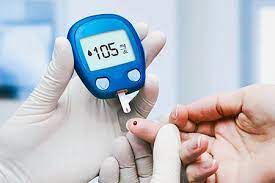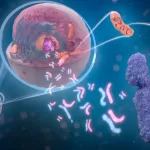A new study published in The Lancet Diabetes & Endocrinology has revealed that measuring glycated hemoglobin (HbA1c) levels in early pregnancy could serve as a simple and effective screening tool for predicting gestational diabetes. This approach has the potential to reduce the need for more complex and inconvenient tests like the oral glucose tolerance test (OGTT), which is currently the standard for diagnosing the condition.
Background
Gestational diabetes, characterized by high blood glucose levels during pregnancy, poses risks for both mother and baby. It is particularly prevalent in low- and middle-income countries, which account for more than 90% of global cases. One major challenge is the accessibility of diagnostic tests like the OGTT, typically performed between 24 and 28 weeks of gestation. The test is not only logistically difficult, but it also has poor reproducibility, leading to inconsistent results, especially in resource-limited settings.
While most countries recommend OGTT as the standard diagnostic tool, New Zealand is an exception, where early pregnancy HbA1c is used as an initial test. The newly published study suggests that this approach may be more efficient and convenient for predicting gestational diabetes in diverse populations.
Study Design
Researchers conducted the study across three countries: India, Kenya, and the UK, involving pregnant women at less than 16 weeks of gestation. The study investigated whether early pregnancy HbA1c levels, either alone or combined with other risk factors such as age, body mass index (BMI), and family history of diabetes, could accurately predict the development of gestational diabetes.
A total of 3,070 pregnant women from India, 4,104 from Kenya, and 4,320 from the UK were included. Participants underwent OGTT between 24 and 28 weeks of gestation to assess the incidence of gestational diabetes.
Key Findings
The study found significant differences in the prevalence of gestational diabetes across the three countries: 19.2% in India, 3.0% in Kenya, and 14.5% in the UK. Early pregnancy HbA1c was independently associated with gestational diabetes at 24-28 weeks, with risk factors being 1.6 in India, 3.49 in Kenya, and 4.72 in the UK.
The study’s most important observation was that a composite risk score model combining HbA1c with other known risk factors provided the most reliable prediction of gestational diabetes. Using this model, the researchers implemented a two-threshold screening method that could rule in or rule out the condition early in pregnancy. This method could potentially avoid up to 50% of OGTTs in India, 64% in Kenya, and 55% in the UK.
Interestingly, using HbA1c alone as a screening test had a smaller impact on reducing OGTTs. The study showed that only 5-6% of OGTTs could be avoided using HbA1c as a standalone test.
Study Significance
The findings suggest that early pregnancy HbA1c, particularly when used with other risk factors, is a reliable predictor of gestational diabetes and could significantly reduce the need for OGTTs. This screening method is especially valuable in low- and middle-income countries where access to more complex tests is limited.
The two-threshold approach identified women at high risk (rule-in gestational diabetes), low risk (rule-out gestational diabetes), and medium risk, where selective OGTTs could still be performed. This stratified screening model could streamline diagnosis and reduce the burden on healthcare systems.
Although the study did not include women with severe anemia or hemoglobinopathies—common in low-income countries—analysis showed that mild-to-moderate anemia had minimal impact on HbA1c levels.
Conclusion
Early pregnancy HbA1c testing offers a promising alternative to the more complex OGTT for predicting gestational diabetes, especially in settings with limited healthcare access. If widely implemented, this approach could improve maternal and fetal outcomes by allowing for earlier intervention and reducing the need for resource-heavy testing.
Journal Reference:
Saravanan P. 2024. Early pregnancy HbA1c as the first screening test for gestational diabetes: results from three prospective cohorts. The Lancet Diabetes and Endocrinology.












